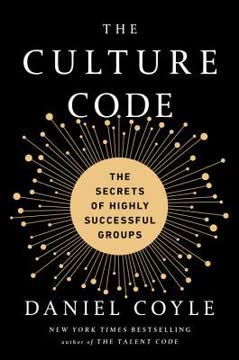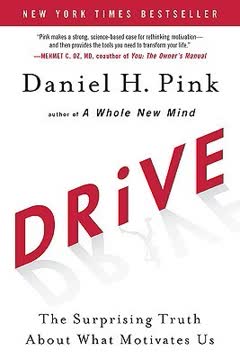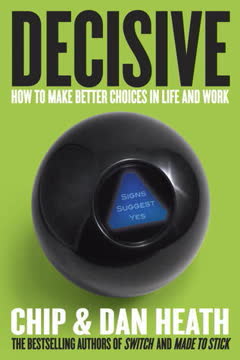重点摘要
1. 指引骑手:提供清晰的变革方向
“看似抵抗的往往是缺乏清晰度。”
骑手代表我们的理性一面。 它是我们计划和解决问题的部分,但也可能过度思考和分析,导致决策瘫痪。为了克服这一点,领导者必须提供明确、具体的变革方向。
清晰度对成功的变革至关重要。 模糊的目标如“更健康饮食”不如具体的目标如“改用1%牛奶”有效。指令越明确,人们越容易遵循。这就是为什么美国军队使用“指挥官意图”——一个清晰、简洁的期望结果声明——来指导士兵在不可预测的情况下行动。
清晰方向的例子:
- 西南航空的核心原则:“我们是低票价航空公司”
- 健康运动的具体信息:“购买1%牛奶”
- 美国军队的指挥官意图:“打破东南地区敌人的意志”
2. 激励大象:调动情感以推动变革
“仅仅知道某事并不足以引发变革。让人们感受到某种情感。”
大象代表我们的情感一面。 它是我们本能的部分,感受痛苦和快乐。虽然骑手可以计划和分析,但推动变革的能量来自大象。
情感是强大的动机。 当人们感受到某种情感时,他们更可能改变,而不仅仅是知道某事。这就是为什么震撼的示范或生动的故事往往比单纯的逻辑论证或数据更有效。
激励大象的方法:
- 产生共鸣:向人们展示不改变的后果
- 使用生动的例子:如乔恩·斯特格纳的“手套神龛”来说明浪费购买
- 触及身份:帮助人们看到自己是“会做出这种改变的人”
- 激发希望:展示改变是可能的,如越南村庄的“亮点”
3. 塑造路径:改变环境以使变革更容易
“看似人际问题的往往是情境问题。”
路径代表环境。 这是变革发生的背景。通过改变环境,我们可以使变革变得更容易,即使骑手不确定而大象犹豫。
环境的微调可以产生巨大影响。 周围环境的小变化可以导致行为的显著变化。这就是为什么改变情境往往比直接改变人更有效。
塑造路径的例子:
- 使用小盘子以鼓励小份量
- 自动储蓄计划以增加退休储蓄
- 使用清单以减少医院的错误
- 移除排队系统以改善客户服务(如在Rackspace)
4. 找到亮点:复制成功的行为
“每个问题都有一个亮点,一个积极偏差的口袋,可以为解决方案提供基础。”
亮点是成功的异常值。 它们是已经在小规模上有效的解决方案实例。通过识别和分析这些亮点,我们通常可以找到既有效又可行的解决方案。
复制比创新更容易。 与其从头解决问题,不如寻找当前系统内的成功案例并尝试复制它们。这种方法通常比设计全新的解决方案更快、更有效。
找到并利用亮点的步骤:
- 寻找异常值:识别已经实现期望结果的实例
- 分析异常值:确定这些成功案例的不同之处
- 复制成功:更广泛地实施识别出的行为或条件
5. 编写关键行动:将变革分解为具体行动
“不要考虑大局,而要考虑具体行为。”
模糊是变革的敌人。 当面临过多选择或不明确的方向时,人们往往会停滞不前或回归旧习惯。通过编写关键行动,我们提供了人们可以遵循的明确、可操作的步骤。
具体行为比一般策略更容易实施。 与其设定广泛的目标,不如关注具体的行动。这减少了决策瘫痪,使人们更容易迈出变革的第一步。
编写关键行动的例子:
- “购买1%牛奶”而不是“更健康饮食”
- “使用5分钟房间救援”而不是“清理房子”
- “在会议期间站立”以保持会议简短而集中
- “遵循这五个步骤以防止医院感染”
6. 指向目标:描绘引人入胜的最终目标
“SMART目标假设情感;它们并不产生情感。”
明确的目标激励行动。 人们需要知道他们要去哪里,以及为什么值得付出努力。对未来的引人入胜的愿景可以激励大象并引导骑手。
目标明信片是对未来的生动描绘。 它们应该具体到足以被识别,但又足够激励人心。与专注于细节的SMART目标不同,目标明信片能够引发情感。
有效的目标明信片:
- 克里斯托尔·琼斯告诉一年级学生,他们将在年末成为三年级学生
- 劳拉·埃瑟曼设想的“一站式乳腺护理诊所”
- 英国石油公司在石油勘探中的“无干井”目标
- 马丁·路德·金的“我有一个梦想”演讲
7. 找到情感:创造情感联系以激励变革
“人们更可能在感受到某种情感时改变,而不仅仅是在思考某事时。”
情感驱动行动。 虽然逻辑论证可以说服骑手,但情感诉求才是推动大象的动力。要创造持久的变革,我们需要调动人们的情感。
生动的体验可以绕过抵抗。 有时,展示比讲述更有力量。创造让人们感受到变革必要性的体验,往往比单纯呈现事实和数据更有效。
找到情感的方法:
- 使用示范:如“手套神龛”来说明浪费
- 讲述故事:分享能够引发共鸣或灵感的叙述
- 创造体验:如让开发者观察用户在使用他们的软件时的挣扎
- 触及身份:呼应人们对自己身份的认同或期望
8. 缩小变革:让任务感觉更可管理
“人们发现,完成较长旅程的一部分比在较短旅程的起点更具激励。”
大变革可能令人不知所措。 面对艰巨的任务时,人们往往会停滞不前或在开始之前就放弃。通过缩小变革,我们让其感觉更可管理,从而增加成功的可能性。
小胜利积累动力。 每一个小成功都能带来希望和动力,鼓励进一步行动。这种“滚雪球效应”可以随着时间的推移导致显著的变化。
缩小变革的技巧:
- 设定里程碑目标:将大目标分解为更小、可实现的步骤
- 创造一个起步:让人们看到他们已经走了一部分
- 减少范围:从“5分钟房间救援”开始,而不是清理整个房子
- 关注小胜利:庆祝进展,无论多小
9. 培养人才:培养成长心态和新身份
“看似性格问题的往往是情境问题。”
身份塑造行为。 人们往往根据他们认为自己(或想要成为的)身份做出决策,而不是基于理性的成本和收益分析。通过塑造身份,我们可以影响行为。
成长心态促进变革。 相信能力可以通过努力发展的人,更可能在面对挑战时坚持下去。培养这种心态可以使变革变得更容易。
培养人才的策略:
- 培养成长心态:教导能力可以通过努力发展
- 创造新身份:如巴西拉塔的“发明家”或圣卢西亚的环保主义者
- 设置“行动触发器”:预先加载决策以形成即时习惯
- 利用“皮格马利翁效应”:高期望可以导致表现改善
10. 调整环境:调整周围环境以促进期望行为
“看似个人问题的往往是情境问题。”
环境塑造行为。 往往,看似缺乏意志力或动机的情况实际上是环境因素的结果。通过改变环境,我们可以使正确的行为更容易,而错误的行为更难。
小变化可以产生大影响。 对环境的简单调整可以导致行为的显著变化。这通常比直接改变人更容易和有效。
环境调整的例子:
- 使用小盘子以鼓励小份量
- 自动注册401(k)计划以增加储蓄
- 在自助餐厅移除托盘以减少食物浪费
- 在道路上添加车道线以减缓交通
- 在医院使用清单以减少错误
11. 建立习惯:创建支持变革的常规
“当行为成为习惯时,它是‘免费的’——不需要骑手的负担。”
习惯减少认知负担。 一旦某种行为变得自动化,它就不再需要有意识的努力或决策。这释放了心理资源,使行为更可能持续。
常规可以嵌入变革。 通过围绕期望行为创建常规,我们可以使其更有可能坚持。随着时间的推移,这些常规可以成为支持长期变革的习惯。
建立习惯的策略:
- 使用行动触发器:将新行为与现有常规联系起来
- 创建清单:减少错误和认知负担
- 从小开始:从易于实施的行为开始
- 保持一致:在相同的环境中重复该行为
- 消除摩擦:尽可能简化期望行为
12. 团结群体:利用社会影响力传播变革
“行为是会传染的。”
社会影响力是强大的。 人们在模糊的情况下会向他人寻求行为线索。通过利用社会证明,我们可以使变革更具吸引力,更容易被接受。
可见的行为传播最快。 当人们看到他人采纳新行为时,他们更可能效仿。这就是为什么使变革可见并突出早期采纳者是重要的。
团结群体的方法:
- 宣传积极行为:如酒店客人重复使用毛巾
- 创建社会证明:展示他人已经在进行变革
- 积极利用同伴压力:如杰拉德·卡肖的同行评审系统
- 创建“自由空间”:允许改革者协调和相互支持
- 讲述故事:分享成功变革的叙述以激励他人
总之,通过指引骑手、激励大象和塑造路径,我们可以在自己和组织中创造持久的变革。关键在于提供清晰的方向、调动情感,并创造支持期望变革的环境。
最后更新日期:
FAQ
What's Switch: How to Change Things When Change Is Hard about?
- Focus on Change: The book delves into the psychology of change, offering insights on how to implement it effectively across personal, organizational, and societal levels.
- Three-Part Framework: It introduces a framework consisting of the Rider (rational mind), the Elephant (emotional mind), and the Path (environment), addressing both logical and emotional aspects of change.
- Real-World Examples: Filled with compelling stories and case studies, the book illustrates the principles of change in action, making it relatable and practical.
Why should I read Switch: How to Change Things When Change Is Hard?
- Practical Guidance: The book provides actionable strategies for making change easier and more effective, applicable in various contexts from personal life to business.
- Research-Based Insights: Authors Chip and Dan Heath draw on extensive research in psychology and behavioral economics, offering a solid foundation for their advice.
- Inspiring Stories: Engaging anecdotes not only illustrate the concepts but also inspire readers to take action in their own lives.
What are the key takeaways of Switch: How to Change Things When Change Is Hard?
- Three-Part Framework: Direct the Rider, Motivate the Elephant, and Shape the Path are essential for effective change, addressing both rational and emotional components.
- Find the Bright Spots: Focus on what is working well and replicate successful behaviors to drive improvements.
- Shrink the Change: Break down large changes into smaller, manageable steps to reduce resistance and increase motivation.
What is the concept of "Direct the Rider" in Switch?
- Clear Direction: Provide specific, actionable guidance to eliminate ambiguity and help individuals understand necessary changes.
- Script the Critical Moves: Outline exact steps needed to achieve desired change, preventing analysis paralysis.
- Point to the Destination: Articulate a clear and compelling vision of the end goal to serve as a motivational anchor.
How does Switch define "Motivate the Elephant"?
- Emotional Engagement: Focus on tapping into the emotional side to inspire action, as the Elephant represents the instinctive, emotional part of our minds.
- Find the Feeling: Create emotional connections through storytelling and relatable experiences to motivate change.
- Shrink the Change: Make change feel smaller and more manageable to build confidence and momentum.
What does "Shape the Path" mean in Switch?
- Environment Matters: Modify the environment to make change easier by removing obstacles and creating conditions that facilitate desired behavior.
- Tweak the Environment: Small adjustments can lead to significant changes in behavior, such as altering workspace layout for productivity.
- Build Habits: Establish routines and systems that support desired change, reinforcing positive actions over time.
What are "Bright Spots" in Switch?
- Successful Examples: Bright Spots are instances where desired behavior is achieved despite challenges, providing insights into effective strategies.
- Focus on Success: Leaders should replicate successful behaviors rather than solely analyzing failures, fostering a culture of success.
- Case Studies: Examples like Jerry Sternin’s work in Vietnam illustrate how leveraging Bright Spots can lead to significant improvements.
How does Switch suggest to "Shrink the Change"?
- Make It Manageable: Break down larger changes into smaller, achievable steps to reduce overwhelm and facilitate action.
- Quick Wins: Focus on small victories to build momentum and confidence, such as starting with a single healthy meal.
- Psychological Impact: Smaller changes create a positive feedback loop, encouraging further action and reducing resistance.
What is the "Commander’s Intent" concept in Switch?
- Clear Direction: A concise statement outlining the goal of an operation, allowing flexibility in execution.
- Focus on Outcomes: Emphasizes understanding the desired end state rather than detailed plans.
- Empowerment: Encourages individuals to make decisions aligning with the overall goal, fostering initiative and adaptability.
How does the book define the "Rider" and "Elephant"?
- Rider: Represents the rational, analytical part of our mind responsible for planning and decision-making, but can be overwhelmed by complexity.
- Elephant: Symbolizes the emotional, instinctual side driving behaviors and reactions, often resisting change unless motivated.
- Balance Needed: Successful change requires aligning both the Rider and the Elephant, ensuring rational plans are supported by emotional commitment.
What role does identity play in the change process according to Switch?
- Identity Shift: Change is more likely to succeed when individuals adopt a new identity aligning with desired behavior.
- Growth Mindset: Encourages seeing challenges as opportunities for development rather than threats.
- Social Reinforcement: Viewing oneself as part of a community or movement strengthens commitment to change.
What are the best quotes from Switch: How to Change Things When Change Is Hard and what do they mean?
- “What looks like resistance is often exhaustion.”: Highlights that people may be overwhelmed rather than resistant, suggesting leaders consider emotional states.
- “To change someone’s behavior, you’ve got to change that person’s situation.”: Emphasizes the importance of environment in influencing behavior, suggesting context modification.
- “Change isn’t an event; it’s a process.”: Underscores that successful change requires ongoing effort and reinforcement, not immediate results from a single action.
评论
《改变:当改变变得困难时如何应对》的评价褒贬不一。许多人赞赏其对行为改变的实用方法,使用骑手(理性思维)引导大象(情感)在路径(环境)上前行的隐喻。读者们欣赏书中提供的现实案例和清晰的变革实施框架。有些人觉得这些概念虽然熟悉,但呈现得很好;而另一些人则批评其内容重复且解决方案过于简单。总体而言,这本书被认为对个人和组织的变革有帮助,尽管少数评论者认为其在某些问题上的处理方式乏味或存在问题。
Similar Books

















